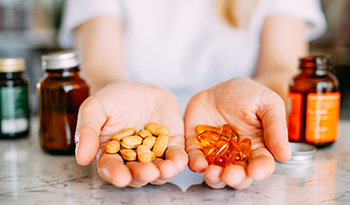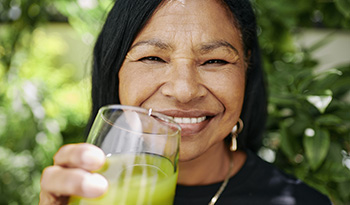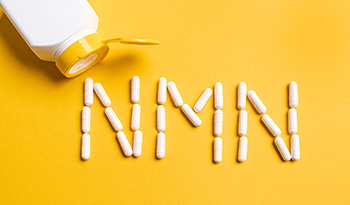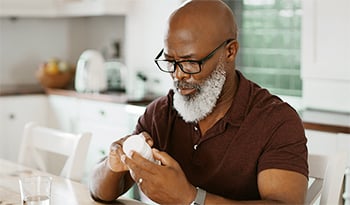A Natural Approach to Bone Health
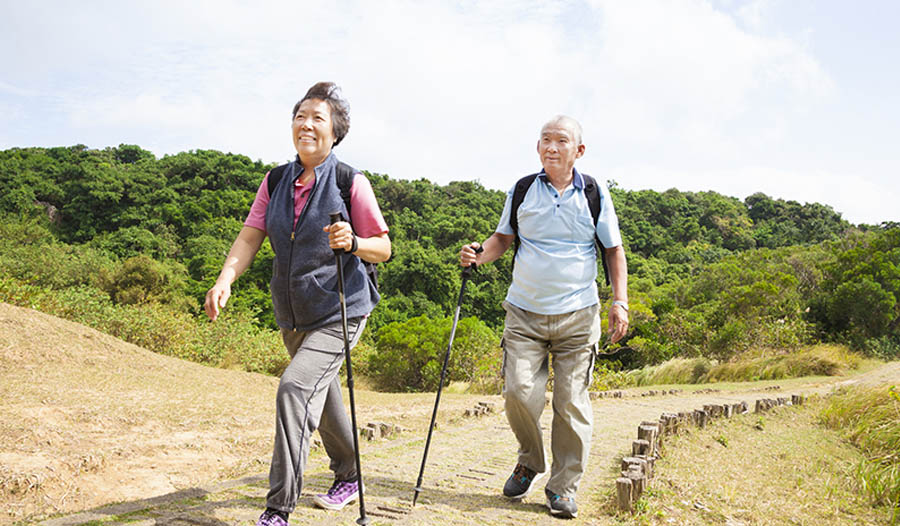
A newborn baby has 280 bones, throughout childhood many of these bones fuse together, resulting in a total of 208 bones in adults. Composed of water (10-20%), minerals (70%), and collagen (10%), bones are their strongest when a person is between the ages of 25 and 35. Keeping them healthy is vital.
Preventing bones from thinning is crucial for maintaining health. Osteopenia and Osteoporosis">Osteoporosis">Osteoporosis">Osteoporosis">Osteoporosis">Osteoporosis">Osteoporosis are conditions diagnosed by a doctor when one’s bone density is thinner than expected for a person’s age. For many, bones thin as one gets older. However, there are things that can be done to help ensure bones remain strong and reduce a person’s chance of breaking a bone.
Bones have more functions in the human body than you might realize. Here's just some of what they do:
- Store good fats
- Produce white blood cells, which protect us from infection
- Produce red blood cells, a.k.a. hemoglobin, which are required to circulate oxygen throughout the body
- Store minerals that the body needs for enzymes to function
- Provide structural support for the body
- Provide mobility
Osteoporosis
Osteoporosis affects more than 75 million people in Japan, Europe and the United States and is estimated to affect more than 200 million people worldwide. Before a person develops osteoporosis, they have a condition called osteopenia, where the bones are thinner than normal but not as thin as those with osteoporosis.
If a person is deemed to be “at risk” for thin bones, a doctor may order a bone density test, a type of x-ray that determines the bone’s density. A bone density test is usually recommended for certain individuals:
Women age 65 years of age or older
- Post-menopausal women with one of the following risk factors: fracture after age 45, use of oral steroids for more than three months, tobacco use, body mass index of 22 or less
- A man or woman who has a condition that increases risk of osteoporosis, such as rheumatoid arthritis
- Men 50 years of age and older with one of the following risks: non-traumatic fracture, low testosterone, findings of osteopenia on x-ray, hyperparathyroidism
Those with osteoporosis are at increased risk of bone fracture. The most commonly seen is a hip fracture, which frequently occurs after an accidental fall. Almost weekly in my private medical practice, I admit a patient to our local hospital after they sustain a hip fracture. In most cases, the patient has lost their balance and fallen.
When I admit a patient, I consult a bone specialist (an orthopedic surgeon) who will perform hip replacement surgery. The patient usually stays in the hospital for a few days before being transferred to a rehabilitation facility, where they will receive extra assistance and strength training using their new titanium hip.
Hip fractures can be dangerous and life altering. Studies have shown that anywhere between 14 and 48 percent of those with a hip fracture are at risk for dying within one year of their accident. The importance of strengthening one’s bones to help prevent a fracture cannot be overstated.
Those who are at risk for frequent falls should consider consulting with a physical therapist and may want to consider a “home safety evaluation” by a trained professional. It is not uncommon for a person to fall by stumbling on a throw-down rug or by accidentally tripping over a pet dog or cat. Poor vision or the presence of a cataract in the eye can also increase falling risks.
A person with evidence of osteoporosis or osteopenia should talk to their physician to determine if a blood test is required to rule out other conditions. A blood test that measures alkaline phosphatase can help rule out Paget’s disease, a condition where bones are malformed and weak. Also, a calcium blood test, if low, may indicate poor absorption or poor intake of the mineral in diet. An elevated calcium blood test may indicate a hormone abnormality (an overactive parathyroid gland) in which calcium is being leached from the bone.
A normal calcium blood level does not eliminate the need to take a calcium supplement. A kidney function blood test, complete blood count, magnesium, testosterone level (men) and estrogen level (women), and thyroid tests (TSH, Free T4, Free T3) should also be considered if searching for a cause of thin bones.
Risk Factors for Osteoporosis:
- Women are affected more than men
- Women of European and Asian descent are at higher risk than those of African and Hispanic descent
- Women aged 65 or older
- Body mass index of <22
- Tobacco use or history of tobacco use
- Family history of osteoporosis
- Metabolic syndrome
- Diabetes
- Hypothyroidism, an underactive thyroid
- Soda pop intake
- Medications such as oral steroids, antidepressants (SSRIs like fluoxetine, sertraline, celexa), and blood thinners (warfarin)
How to Prevent Bone Loss
There are many diet and lifestyle changes a person can undertake to help maintain bone health. The more proactive one is ensuring proper nutrition and staying active, the healthier one’s bones will be.
Calcium – Ensuring one’s diet is high in calcium-rich fruits and vegetables is important for keeping bones strong.
Vitamin D – Assisting in bone strength is just one of the many health benefits of vitamin D. (Read more about Health Benefits of Vitamin D) Routine blood tests should be done to ensure adequate amounts are being consumed and/or produced. Spending quality time outdoors in nature is also a beneficial way to generate vitamin D.
Magnesium – An adequate intake of magnesium-rich foods, which include green vegetables, is crucial. Magnesium works together with calcium to make bones strong.
Weight-bearing exercise – Performing weight-bearing exercise for a minimum of 150 minutes per week is useful in keeping bones strong. Consider at least 30 minutes a day, five days per week.
Tai Chi – A type of martial art popular in Asia has been shown to help those 65 years and older reduce the risk of falling by 50 percent, according to a study in the Journal of the American Geriatrics Society.
Gut Health – Consuming cultured foods plays an important part in maintaining a healthy gut microbiome. These foods include miso soup, yogurt, kefir and sauerkraut. In addition, a diet rich in fruits and vegetables provides prebiotics, food for gut bacteria, which help good bacteria to thrive.
Conventional Treatment:
Pharmaceutical medicines approved by the FDA to prevent and treat osteoporosis include:
- Bisphosphonates (oral or IV,: alendronate, ibandronate, risedronate, pamidronate, zoledronic acid)
- Calcitonin nasal spray
- Parathyroid hormone (Teriparatide)
- Estrogen/Progesterone/Testosterone therapy – If using, consider using bio-identical hormone replacement, which may be a safer alternative.
- Estrogen agonists/antagonists (raloxifene)
Bisphosphonates is the main class of pharmaceutical medicines that can help reverse osteoporosis or osteopenia and rebuild bones. However, some studies suggest that bone quality may be compromised.
The FDA has also approved an intravenous bisphosphonate osteoporosis drug called zoledronic acid (Reclast/Zometa), which can be given every two years for a cost of $1,200. It is usually covered by health insurance if a person has too many side effects when a bisphosphonate is taken in a pill form. However, these drugs are also not without side effects. Some patients may develop an upset stomach or possibly jaw pain or jaw bone death (osteonecrosis). The intravenous formulation has been reported to cause flu-like symptoms and rarely, even kidney damage in some people. Epocrates Online, a physician drug-prescribing database, lists 23 side effects possible when one takes a bisphosphonate medicine.
Common Side Effects of Bisphosphonates:
- Abdominal pain
- Acid reflux
- Nausea
- Upset stomach (dyspepsia)
- Constipation
- Diarrhea
- Joint pain
- Gas (flatulence)
Serious Side Effects:
- Difficulty swallowing (Dysphagia)
- Inflammation of esophagus (Esophagitis)
- Esophageal ulcer
- Esophageal perforation
- Esophageal scarring
- Stomach ulcer
- Hypersensitivity reaction
- Whole body swelling (Angioedema)
- Skin reactions, severe
- Low blood calcium (Hypocalcemia)
- Eye swelling (Uveitis, Scleritis)
- Osteonecrosis, jaw (jaw bone death)
- Musculoskeletal pain, severe
Due to these side effects, many choose a more natural approach, at least initially. While I do frequently prescribe prescription these medications for osteoporosis and osteopenia, many of my patients frequently consider at least trying alternative therapies first. In most cases, this is very appropriate.
Alternative Therapies:
- Bone broth – Bone broth soup and bone broth powder are great additions to one’s supplement regimen. Bone broth is a good source of amino acids, type 2 collagen, glucosamine, chondroitin and hyaluronic acid, all important for bone health
- Collagen – A 2017 study showed that consuming extra protein may help prevent hip fractures and keep bones strong. Collagen powder is an excellent source of bone-building protein.
- Probiotics – A healthy gut microbiome helps optimize absorption of vitamins and minerals, which ultimately helps improve bone health. Animal studies have shown improvement in bone density while human studies have shown bones are less likely to “thin out” in the presence of probiotics that contain both lactobacillus and bifidobacteria strains.
- Vitamin C – Important for collagen formation in the bone. Recommended dose is 500 to 1,000 mg per day
- Vitamin D – Should be taken daily. Vitamin D helps ensure calcium and magnesium are adequately absorbed. Recommended vitamin D dose ranges from 1,000 IU to 5,000 IU daily
- Calcium – A calcium supplement should be considered, 500 mg to 1,200 mg daily is advised
- Magnesium – Magnesium chelate (magnesium aspartate, magnesium citrate, magnesium malate) should be taken daily, 125mg to 500 mg. If you develop loose stools, reduce your dose
- Vitamin K2- This vitamin should be taken regularly, at least 45 mcg daily. If you are on Warfarin (Coumadin), your dose may need to be adjusted. Consult with your physician.
- Strontium – A trace mineral which helps increase bone density in men and women according to studies. Up to 2,000 mg daily should be considered
- Boron – A trace mineral. Take 3-9 mg daily. This amount is usually present in a quality multivitamin
- Silica – 5 to 10 mg daily, helpful in overall bone health
- Zinc – 10 mg daily is advised
There are many bone health supplements available which contain many of the above vitamins and minerals
Nutrition
- Consume a diet rich in green vegetables, which are high in calcium, magnesium and vitamin K. These include broccoli, cabbage, spinach, bok choy, kale, etc.
- Consume a diet high in vitamin-A-containing foods, such as carrots, sweet potatoes, kale and many more
- Consume a diet high in cultured foods, such as yogurt, kefir, and miso soup
You Can Improve Your Bone Health
Optimal bone health is an important aspect of one’s overall health. A well-rounded healthy diet, in addition to regular weight-bearing exercise, plays an important role in both the prevention and treatment of osteopenia and osteoporosis. Frequently, that is not enough, and nutritional supplements that help ensure adequate protein, vitamins, and minerals are needed for optimal bone strength. If that is not enough, prescription medications should be considered.
References:
- Accessed October 8, 2017- https://en.wikipedia.org/wiki/Bone
- Osteoporosis Int. 2006 Dec;17(12):1726-33. Epub 2006 Sep 16.
- Schnell S, Friedman SM, Mendelson DA, Bingham KW, Kates SL. The 1-Year Mortality of Patients Treated in a Hip Fracture Program for Elders. Geriatric Orthopaedic Surgery & Rehabilitation. 2010;1(1):6-14. doi:10.1177/2151458510378105.
- J Am Geriatr Soc. 2017 Sep;65(9):2037-2043. doi: 10.1111/jgs.15008. Epub 2017 Jul 24.
- March 15, 2010 Family Practice News. In article entitles Risks of Long Term Bisphosphonate Use Unclear by Mary Ellen Schneider
- Dietary Protein Intake above the Current RDA and Bone Health: A Systematic Review and Meta-Analysis Taylor C. Wallace & Cara L. Frankenfeld Journal of the American College of Nutrition Vol. 36 , Iss. 6,2017
- S Jafarnejad et al. J Am Coll Nutr 36 (7), 497-506. 2017 Jun 19. Effects of a Multispecies Probiotic Supplement on Bone Health in Osteopenic Postmenopausal Women: A Randomized, Double-Blind, Controlled Trial
- J Clin Endocrinol Metab. 2013 Feb;98(2):592-601. doi: 10.1210/jc.2012-3048. Epub 2013 Jan 22.
- Bone. 2009 Sep;45(3):460-5. doi: 10.1016/j.bone.2009.05.014. Epub 2009 May 21.
- JUGDAOHSINGH R. SILICON AND BONE HEALTH. The journal of nutrition, health & aging. 2007;11(2):99-110.
DISCLAIMER:This Wellness Hub does not intend to provide diagnosis...













































































 Table of Contents
Table of Contents











